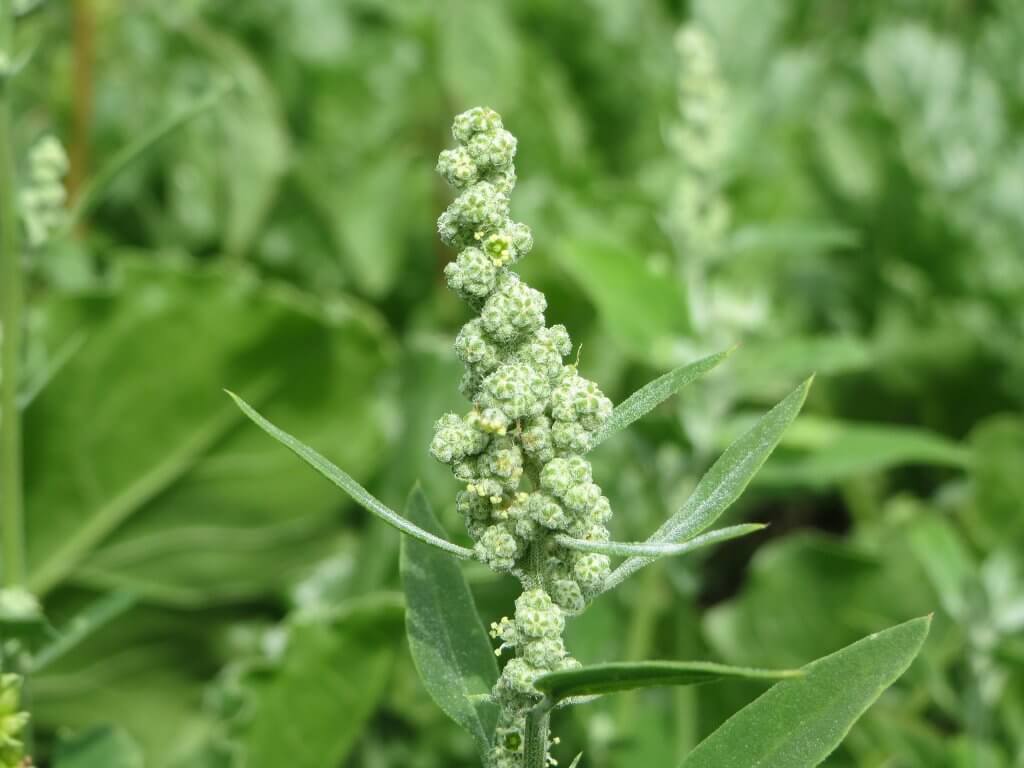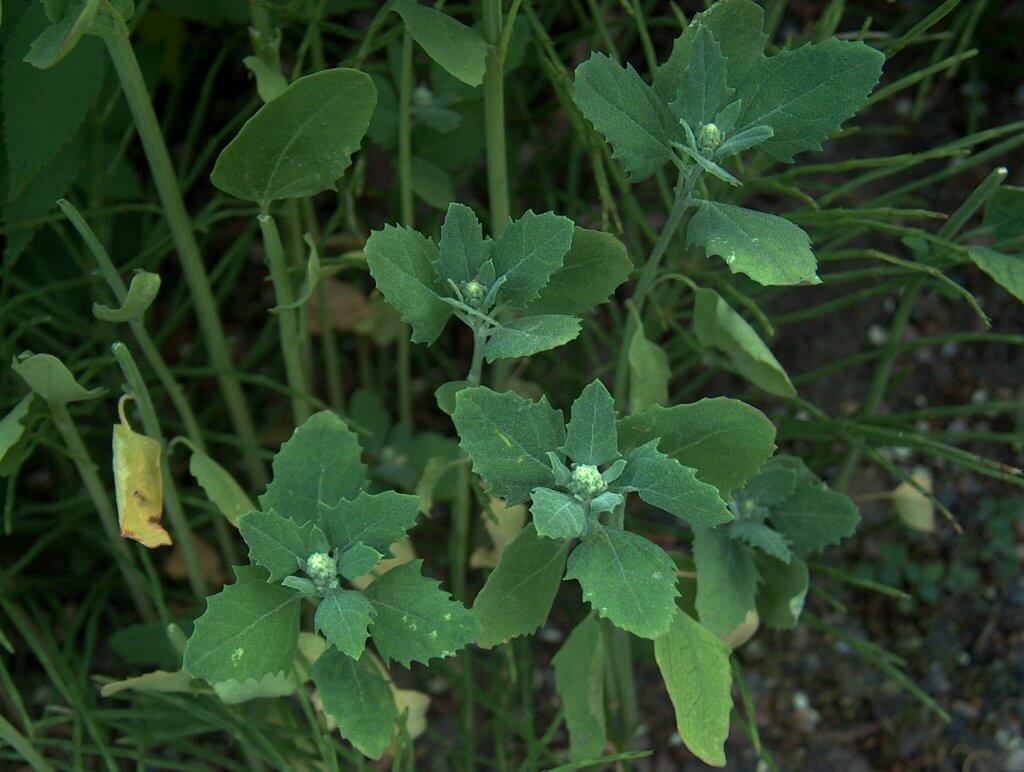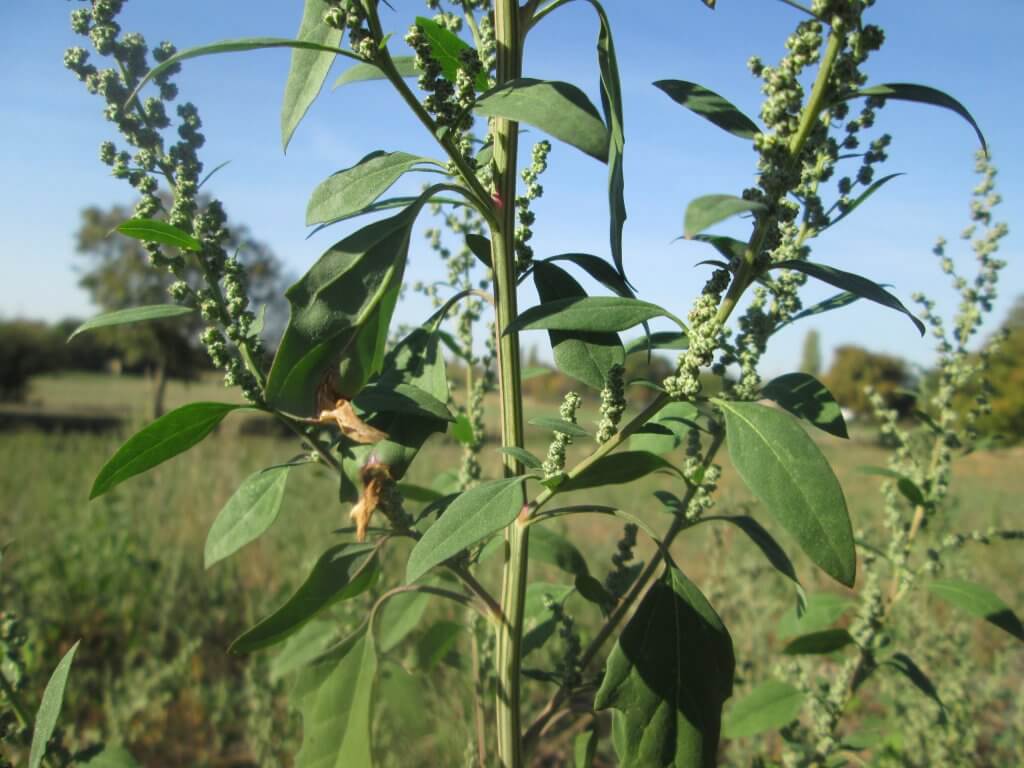Lamb’s Quarters (Chenopodium album), is a fast spreading weed found throughout the world. It is originally thought to be a native of Europe and parts of Eastern Asia. In many areas, particularly India it is cultivated as a food crop, meaning it likely spread via trade and colonisation. Other common names include melde and white goosefoot. The Chenopodium genus contains a number of similar species, with Chenopodium album being the most prolific.
It favors any areas of disturbed soil, particularly roadsides, forest edges and general wasteland. It grows best within soil with a high level of nitrogen, but it is a hardy plant which can grow in a wide variety of locations.

It grows quickly, and can reach a height of up to 2m. It has alternate leaves which begin wide and diamond shaped at the base, but quickly become slim and pointed towards the tops. When flowering in spring, tiny white flowers form clustered stalks at the top of the plant. A huge amount of tiny black seeds are released from seedpods that are formed from the flowers.
Edible parts and history
The young leaves and tops of lamb’s quarters are edible and are a great wild food source. They can be substituted into a recipe to replace other leafy greens such as spinach or kale. Add the leaves into stews, soups and curries for a nutritious boost.
Within areas of Africa and Asia, lamb’s quarter is grown as a crop, and also as animal feed. It also has an ancient history of being specifically cultivated for food. Archaeological digs in Europe have discovered iron age fire pits and storage areas that contained a high amount of lamb’s quarters seed.
Is Lamb’s Quarter Safe to Eat?
The leaves and young shoots are considered safe to eat, however like with most foods, they should only be eaten in moderation. Some studies have shown that they have a high amount of oxalic acid, which can have harmful effects on the body if eaten in large amounts. Spinach, and other leafy greens have similar amounts, so do not let it put you off trying this tasty wild edible!
Foraging
The best characteristic to help with identifying lamb’s quarters is the thin wax like layer that covers the leaves and stems. If you have some water handy, try spilling a few drops across a leaf and watch as it rolls right off. Another identifying feature is that the stems have streaks of a slight purple coloring on the upper side.

A few lookalikes do exist, but luckily most are edible, including the equally nutritious amaranth. Belladonna is occasionally considered a lookalike, and a highly toxic one at that. But there are enough characteristics to tell the two plants apart. Remember, consult a local guide or foraging book for information, and if you are not sure it is best to leave the plant alone.
The best time for harvesting and collecting young leaves and shoots is spring when new growth begins shooting up. However it is possible to harvest the leaves all through the year.

Lamb’s quarters can be found right across the States, so finding a local supply shouldn’t take too long. They grow best in sunny areas of disturbed soil, so the edges of a forest or even your back yard may a great place to start. Make sure to avoid collecting leaves from farmed fields, as its possible the plant could have been treated with a herbicide.
Did you know…
Lamb’s quarter is favored by a number of garden insect pests, particularly leaf miners. For this reason some gardeners choose to plant it next to their vegetables as a companion plant. Hoping to deter the insects away from their crop.
To Conclude
Commonly thought of as only a weed, lamb’s quarters are beginning to re-emerge into the wild food foraging spotlight as a nutritious edible. For more information on the health benefits and best cooking practices of lamb’s quarter see our post here.
—————Written by Hannah Sweet
Hannah is a freelance writer and graphic designer from the UK. With a penchant for travelling, photography and all things botanical, she enjoys writing about a wealth of topics and issues, from conservation and slow living, to design and travel. Learn more about her writing and design services at www.sweetmeanders.co
Many of our readers find that subscribing to Eat The Planet is the best way to make sure they don't miss any of our valuable information about wild edibles.
See our privacy policy for more information about ads on this site






